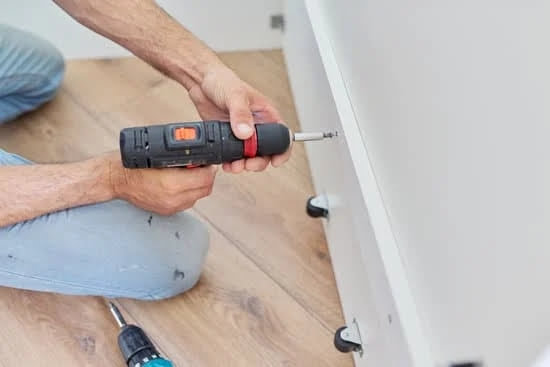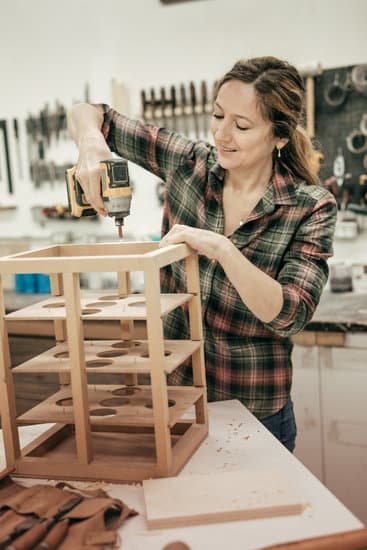Are you looking to dive into the world of woodworking but not sure where to start with setting up your own shop? This article will provide a comprehensive guide on how to set up a simple woodworking shop, covering everything from choosing the right location, essential tools and equipment, safety considerations, layout design, and budget-friendly tips.
Whether you’re a beginner or a seasoned woodworker looking to create a basic setup, these tips will help you get started on the right foot.
When it comes to setting up a simple woodworking shop, the first step is finding the perfect location for your space. From there, you’ll need to invest in essential tools and equipment, ensure safety measures are in place and create an organized work area. Planning and designing your layout is also crucial for optimizing your workspace. This article will guide you through each step with practical advice and helpful tips for beginners in woodworking.
In addition to covering the basics of setting up your woodworking shop, we’ll also provide insights into wood storage and material handling, as well as the maintenance and upkeep of your shop. By the end of this guide, you’ll have all the information you need to create a functional and efficient woodworking shop that suits your needs and budget.
So let’s dive in as we take you through everything you need to know about setting up a simple yet effective woodworking shop.
Choosing the Right Location for Your Woodworking Shop
When it comes to setting up a woodworking shop, one of the first and most important decisions you’ll need to make is choosing the right location for your workspace. Whether you’re setting up shop in your garage, basement, or a dedicated building, the location can have a significant impact on the functionality and safety of your woodworking shop.
Finding the Right Space
The ideal location for a woodworking shop is one that offers enough space for both your work area and material storage. Consider factors such as ceiling height, access to electrical outlets, and ventilation when evaluating potential locations.
Noise and Disturbance Considerations
Since woodworking can create a lot of noise and dust, it’s also important to consider how your shop location might impact others in your household or neighborhood. If possible, choose a location where noisy machinery won’t disturb others, or consider investing in soundproofing materials to minimize noise.
Accessibility
Additionally, think about how easily accessible the location is for transporting materials and finished projects in and out of the space. A convenient location can save time and effort during the woodworking process.
By carefully considering these factors when choosing the right location for your woodworking shop, you can set yourself up for success as you embark on your woodworking journey.
Essential Tools and Equipment for a Simple Woodworking Shop
Basic Hand Tools
When setting up a simple woodworking shop, it’s important to start with the essential hand tools that will be used for various woodworking tasks. These include items such as hand saws, chisels, sanders, clamps, and measuring tools. Investing in good quality hand tools is crucial for achieving accurate and precise woodworking results.
Power Tools
In addition to hand tools, power tools are also essential for a woodworking shop. Some basic power tools to consider for your shop include a table saw, drill press, band saw, router, and orbital sander. These power tools will help increase efficiency and precision in your woodworking projects.
Workbench and Workholding
A sturdy workbench is another vital piece of equipment for any woodworking shop. The workbench provides a stable surface for working on projects and often includes features such as vices or clamps for securing materials during cutting, drilling, or sanding. Proper workholding and clamping systems are crucial for ensuring safe and accurate workmanship.
When learning how to set up a simple woodworking shop, it’s important to prioritize safety and functionality when choosing the necessary tools and equipment. By investing in high-quality tools that meet the specific needs of your projects, you can create a well-equipped workshop that will support your woodworking endeavors for years to come.
Setting Up a Safe and Organized Work Area
- Safety First: Always prioritize safety in your woodworking shop by wearing appropriate protective gear such as goggles, ear protection, and a dust mask. Make sure all power tools have safety guards in place and follow proper procedures for handling and using each tool.
- Workbench Setup: Invest in a sturdy workbench that provides ample space for your projects. Keep it clutter-free and organized by installing racks or shelves for storing tools, clamps, and other accessories within easy reach.
- Tool Storage: Proper storage of your tools not only keeps them organized but also prevents accidents from sharp or heavy items lying around. Consider investing in a tool cabinet with drawers or wall-mounted tool racks to keep everything in place.
- Adequate Lighting: Good lighting is essential for accurate work, so ensure that your workspace is well-lit. Consider adding task lighting above the workbench and general lighting throughout the shop.
By following these tips, you can create a safe and organized work area that will enhance your woodworking experience while keeping you safe from potential hazards. Taking the time to set up your shop properly will ultimately lead to better results in your woodworking projects.
Planning and Designing Your Woodworking Shop Layout
When setting up a simple woodworking shop, one of the most important steps is planning and designing the layout of your workspace. A well-thought-out layout can not only improve efficiency but also contribute to a safer working environment.
First, start by taking accurate measurements of your available space. Consider the workflow in your shop – from rough dimensioning of lumber to final sanding and finishing – and plan the arrangement of your tools and workstations accordingly. A common recommendation is to have separate areas for cutting, assembly, and finishing to minimize dust and noise contamination.
Next, consider the power requirements for each machine and position them strategically to minimize the length of electrical cords needed. Also, think about lighting, ventilation, and access to natural light as these factors can greatly impact your comfort and productivity in the workshop.
Lastly, don’t forget about storage. Adequate storage for both hand tools and materials is essential for maintaining an organized workspace. Whether it’s wall-mounted shelves, rolling carts, or dedicated cabinets, having a place for everything will help you keep your shop clutter-free. Remember that proper organization can save time when working on a project.
| Factor | Consideration |
|---|---|
| Measurements | Take accurate measurements of your available space. |
| Workflow | Create separate areas for cutting, assembly, and finishing. |
| Storage | Adequate storage for both hand tools and materials is essential. |
Tips for Budget-Friendly Woodworking Shop Setup
Building a woodworking shop can be an expensive endeavor, but it doesn’t have to break the bank. With some careful planning and resourcefulness, you can set up a functional and budget-friendly woodworking shop. Here are some tips to help you get started on setting up your simple woodworking shop without spending a fortune:
- Shop for second-hand tools: Consider purchasing pre-owned tools and equipment from garage sales, online marketplaces, or auction sites. You can often find quality tools at a fraction of the cost of brand new ones.
- DIY workbenches and storage: Instead of buying expensive workbenches and storage units, consider building your own using affordable materials like plywood and lumber. There are plenty of DIY plans available online to help you create custom workbenches and storage solutions.
- Buy only what you need: When starting out, it’s easy to get carried away and purchase every tool and gadget available. Instead, focus on acquiring the essential tools that you’ll actually use for your projects. As your skills and projects expand, you can gradually invest in more specialized tools.
By implementing these budget-friendly tips, you can minimize your initial investment while still creating a functional woodworking shop that meets your needs. With some creativity and willingness to put in the effort, you can achieve a well-equipped woodworking space without breaking the bank. Remember that as you grow in your woodworking journey, you can always upgrade and invest in additional equipment.
- Consider bartering or trading: If there’s a particular tool or equipment that you need but don’t want to spend money on, consider offering your woodworking skills or other goods in exchange with someone who has what you need.
- Maximize natural lighting: Instead of investing in expensive lighting fixtures, take advantage of natural light by positioning your work areas near windows or skylights. This not only saves money on electricity but also helps create a brighter and more pleasant working environment.
Understanding the Basics of Wood Storage and Material Handling
Wood storage and material handling are crucial aspects of setting up a woodworking shop. Properly storing your wood and materials will not only keep your workspace organized but also ensure the longevity of your supplies. Here’s how to set up a simple woodworking shop with efficient wood storage and material handling.
First, consider the type of wood you’ll be working with and how much space it requires for storage. For example, if you primarily work with large boards, you’ll need ample vertical storage space to keep them safely off the ground and out of the way. Utilizing wall-mounted racks or shelving units can help maximize space in a small woodworking shop.
In addition to wood storage, it’s important to have an organized system for handling your materials. This includes having designated areas for cutting, sanding, and finishing, as well as clear pathways for moving materials around the shop. By implementing clear zones for each step of the woodworking process, you’ll streamline your workflow and minimize clutter.
When it comes to material handling, investing in quality hand trucks or dollies can make it easier to transport heavy sheets of plywood or other large materials around your shop. Having a well-planned layout will also reduce the risk of accidents and injuries caused by tripping over misplaced materials. By prioritizing efficient wood storage and material handling in your woodworking shop setup, you’ll create a safer and more productive environment for pursuing your craft.
| Wood Storage | Material Handling |
|---|---|
| Utilize wall-mounted racks or shelving units | Invest in quality hand trucks or dollies |
| Designate areas for cutting, sanding, and finishing | Create clear pathways for moving materials |
| Maximize space in a small woodworking shop | Reduce risk of accidents and injuries |
Maintenance and Upkeep of Your Woodworking Shop
Once you have set up your simple woodworking shop, it’s important to focus on maintenance and upkeep to ensure that your workspace remains safe, organized, and efficient. Regular maintenance not only prolongs the lifespan of your tools and equipment but also helps create a conducive environment for creativity and productivity.
One of the first things to consider is cleaning and tidying up the shop after every project. Dust and wood shavings can accumulate quickly, so investing in a good dust collection system or vacuum, as well as brooms and dustpans, is essential for keeping the space clean. Regularly wiping down your tools, workbenches, and machinery will also prevent sawdust buildup and rust.
Furthermore, it’s crucial to regularly inspect your tools for any signs of wear or damage. This includes checking for blunt blades, loose bolts, or malfunctioning parts. By maintaining your tools properly, you can ensure they perform optimally and last longer. Additionally, consider sharpening hand tools such as chisels and planes regularly to maintain their effectiveness.
Lastly, staying organized is key to the upkeep of your woodworking shop. Having designated storage for tools, materials, and supplies will help keep everything in its place. It’s also important to periodically reevaluate your workspace layout to optimize efficiency – rearranging workbenches or tool storage may help improve workflow.
By implementing these maintenance practices into your woodworking shop routine, you can ensure that your workspace remains safe, functional, and enjoyable for all your woodworking projects.
Conclusion and Next Steps for Getting Started With Your Woodworking Projects
In conclusion, setting up a simple woodworking shop is an achievable goal for anyone passionate about working with wood. By choosing the right location, acquiring essential tools and equipment, and planning an organized layout, you can create a safe and efficient workspace for your projects. It’s important to remember that setting up a woodworking shop doesn’t have to break the bank – there are plenty of budget-friendly options available for those just starting out.
Once your shop is set up, maintaining it is crucial to ensure safety and longevity. Regular maintenance of tools and equipment, as well as proper wood storage and material handling, will contribute to the overall success of your woodworking endeavors.
Now that you have a better understanding of how to set up a simple woodworking shop, it’s time to take the next steps in pursuing your woodworking projects. Whether you’re a beginner or an experienced woodworker, creating a functional and inspiring workshop is key to honing your craft and bringing your ideas to life. With careful planning, organization, and dedication, you can build the woodworking shop of your dreams and embark on countless fulfilling projects.
Frequently Asked Questions
What Do I Need to Start a Woodworking Shop?
To start a woodworking shop, you’ll need essential tools like saws, drills, chisels, and planes. You’ll also need workbenches, dust collection systems, and storage for materials. Safety equipment like goggles and ear protection are crucial.
Are Wood Shops Profitable?
Wood shops can be profitable if managed effectively. Quality craftsmanship and unique designs can attract customers willing to pay for custom woodwork. Managing expenses, marketing effectively, and offering in-demand products are key to profitability.
How Do You Layout a Workshop?
When laying out a workshop, it’s important to consider the flow of work and accessibility to tools and materials. Organize the space with workstations for different tasks like cutting, sanding, assembly, and finishing. Consider efficient storage solutions for easy access to materials and tools.

Hi everyone! I’m a woodworker and blogger, and this is my woodworking blog. In my blog, I share tips and tricks for woodworkers of all skill levels, as well as project ideas that you can try yourself.





